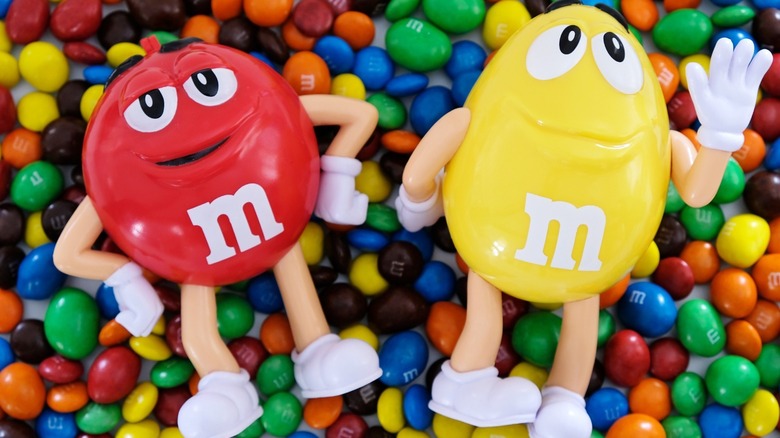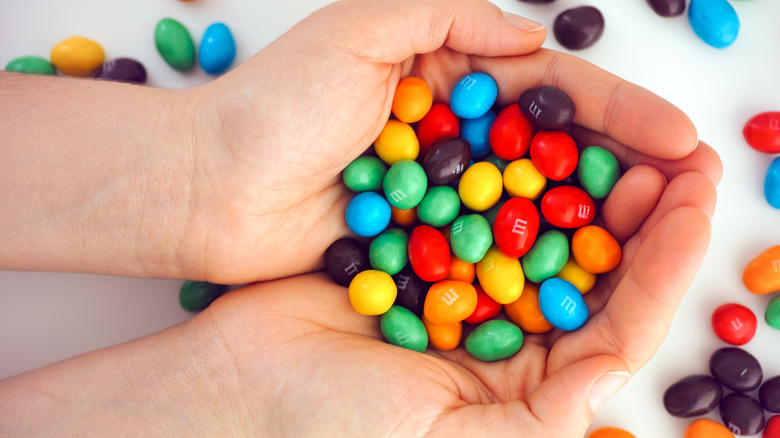The Rarest M&M Color May Surprise You
M&M's have been around since 1941, per History, which means we've been enjoying their chocolatey goodness for 80 years now, with absolutely no intention of stopping any time soon. There are tons of different varieties of these popular Mars candies, with more flavors and ideas coming out regularly. From seasonal sugar cookie options to fillings of all manners including pretzels, brownies, and Nutella, there are literally dozens of different ways to enjoy any style of M&M's. And, while some of the specialty and seasonal flavors have different colors than usual, the main staples have had the same colors for decades — red, green, yellow, orange, blue, and brown.
Whether or not the colors taste differently is a completely separate argument that no one can agree on (just see this discussion on Quora), but figuring out which of the colors appears the least in each bag of M&M's is something that can be quantified a little more scientifically. The rarest color of these candies actually might be a little surprising, especially when you consider how the statistics have changed over the years.
Brown is currently the rarest color of M&M's
SAS Software company claims to be the largest corporate consumer of M&M's. As such, they used their own software to determine the proportions of colors within a bag of M&M's, and their findings were quite surprising. According to SAS, in 2008, Mars released the current color proportions within a bag of M&M's as, "24% blue, 20% orange, 16% green, 14% yellow, 13% red, 13% brown." This different from even 10 years earlier, in 1997, when the company said the rundown was "30% brown, 20% yellow, 20% red, 10% orange, 10% green, and 10% blue."
While running their own experiment in 2017 to determine the current proportions, a member of the SAS team reached out to the candy company with their findings, reporting that the color proportions they unearthed did not match with what Mars published online. According to SAS, the customer support team responded (and stated they get asked this a lot) and then quoted two separate sets of data for the two different factories where M&M's are produced. For one factory, the proportions happened to be: 13% red, 21% orange, 14% yellow, 20% green, 20% blue and 12% brown; for the other factory it was tied for red, yellow, green, and brown at 12.5% each, while orange was 25% and blue was 25%. While brown seems to be the rarest or tied for rarest color in both instances, it's still interesting to note that different factories use different proportions, so we truly may never know the answer.

